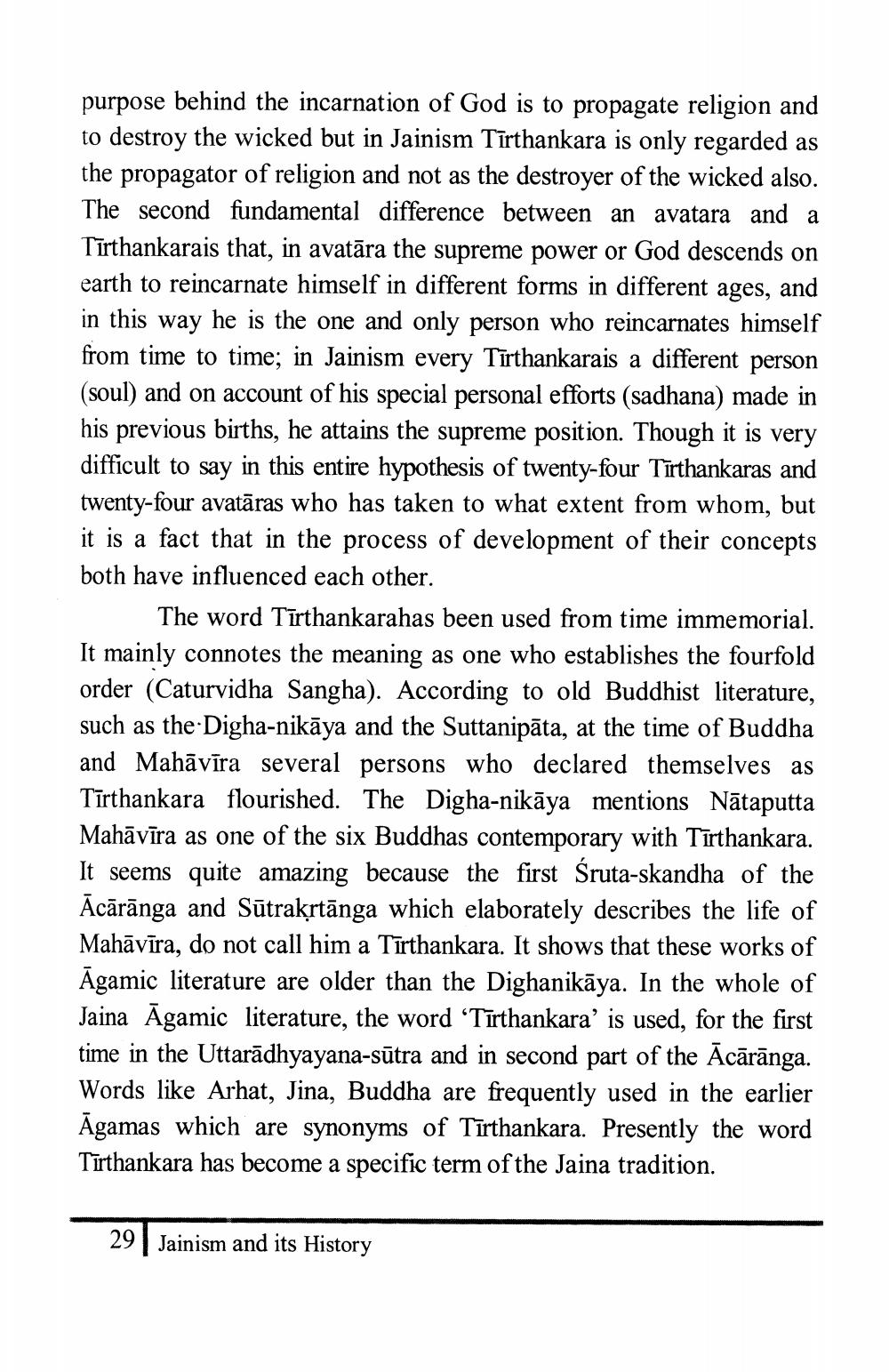________________
purpose behind the incarnation of God is to propagate religion and to destroy the wicked but in Jainism Tīrthankara is only regarded as the propagator of religion and not as the destroyer of the wicked also. The second fundamental difference between an avatara and a Tirthankarais that, in avatara the supreme power or God descends on earth to reincarnate himself in different forms in different ages, and in this way he is the one and only person who reincarnates himself from time to time; in Jainism every Tirthankarais a different person (soul) and on account of his special personal efforts (sadhana) made in his previous births, he attains the supreme position. Though it is very difficult to say in this entire hypothesis of twenty-four Tirthankaras and twenty-four avatāras who has taken to what extent from whom, but it is a fact that in the process of development of their concepts both have influenced each other.
The word Tirthankarahas been used from time immemorial. It mainly connotes the meaning as one who establishes the fourfold order (Caturvidha Sangha). According to old Buddhist literature, such as the Digha-nikāya and the Suttanipāta, at the time of Buddha and Mahāvīra several persons who declared themselves as Tirthankara flourished. The Digha-nikāya mentions Nataputta Mahāvīra as one of the six Buddhas contemporary with Tirthankara. It seems quite amazing because the first Śruta-skandha of the Ācārānga and Sūtrakṛtānga which elaborately describes the life of Mahāvīra, do not call him a Tirthankara. It shows that these works of Āgamic literature are older than the Dighanikaya. In the whole of Jaina Āgamic literature, the word 'Tirthankara' is used, for the first time in the Uttaradhyayana-sūtra and in second part of the Acaranga. Words like Arhat, Jina, Buddha are frequently used in the earlier Āgamas which are synonyms of Tirthankara. Presently the word Tirthankara has become a specific term of the Jaina tradition.
29 Jainism and its History




